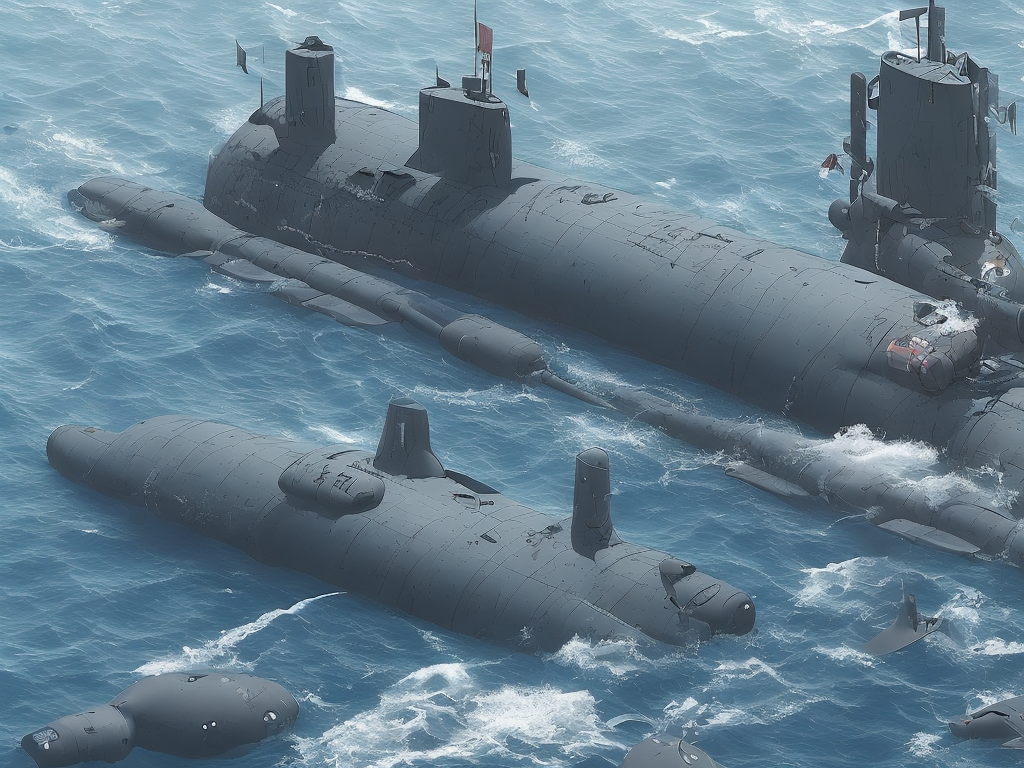
When we think about underwater vessels, the first things that come to our minds are likely submarines and submersibles. While both of these vehicles are designed to operate and move around underwater, there are some major differences between the two. So, let's delve into the key differences between a submarine and a submersible.
Submarine
A submarine is a watercraft that can operate underwater and on the surface of the water. Submarines were initially developed as military vessels, but they're now also used for scientific research, undersea exploration, and commercial purposes, including oil and gas drilling beneath the ocean floor.
Submarines are designed to stay submerged for extended periods, ranging from a few days to several months, without any need to surface. Most modern submarines are powered by nuclear reactors, which provide them with an uninterrupted supply of energy.
Submarines are particularly renowned for their stealth capabilities, which make them incredibly useful for military missions. The exterior of a submarine is covered in sound-absorbing materials, and its motors are specially designed to operate quietly. Additionally, submarines can submerge to depths that regular surface ships cannot reach, which allows them to go undetected by radars and other electronic surveillance systems.
Submersible
Unlike submarines, submersibles are not designed to stay underwater for extended periods, nor do they have any self-sufficiency or sustainable power supply. Submersibles are typically small and detachable vessels that are attached to larger mother ships or platforms and lowered into the water to perform specific tasks.
Submersibles are used for scientific research, underwater photography, surveying the seafloor, commercial exploration, and even deep-sea exploration. They're often used as an alternative to scuba diving since they can perform tasks at greater depths and for more extended periods without risking human life.
Submersibles can be either manned or unmanned, depending on the needs of the mission. Manned submersibles are operated by a pilot, who controls the vehicle's movements and collects data from onboard sensors and cameras. Unmanned submersibles, on the other hand, are remotely controlled by operators on a mother ship or land-based control room.
Differences between submarine and submersible
1. Size
Perhaps the most noticeable difference between submarines and submersibles is their size. Submarines are large vessels that can house hundreds of crew members, whereas submersibles are usually small and manned by just a few people.
2. Operating depth
Submarines are designed to operate at greater depths than submersibles. While submarines can submerge to depths of over 400 meters, most submersibles can only operate at depths of up to 1,000 meters.
3. Purpose
The primary purpose of submarines is military, whereas submersibles have several purposes, including scientific research, exploration, and commercial purposes.
4. Power source
Submarines are powered by onboard nuclear reactors, whereas submersibles depend on external power sources, usually from the mother ship or platform they are attached to.
5. Duration of operation
Submarines can stay underwater for extended periods, ranging from a few days to several months, whereas submersibles can operate for only a few hours or a few days at most before needing to be resupplied or recharged.
6. Crew members
Submarines are manned by a large crew, including officers, engineers, and sailors, whereas submersibles are manned by just a few people, and sometimes, they don't require a crew at all.
Conclusion
In conclusion, submarines and submersibles are both underwater vehicles, but they differ in terms of size, purpose, operating depth, power source, crew members, and duration of operation. Submarines are designed primarily for military purposes, whereas submersibles are used for scientific research, underwater exploration, and commercial purposes. Submarines can operate at greater depths than submersibles and stay underwater for much longer, thanks to their onboard nuclear reactors. On the other hand, submersibles are typically smaller and more maneuverable than submarines, making them better suited for specific tasks that require greater precision and control.
 Self-Instruct
Self-Instruct